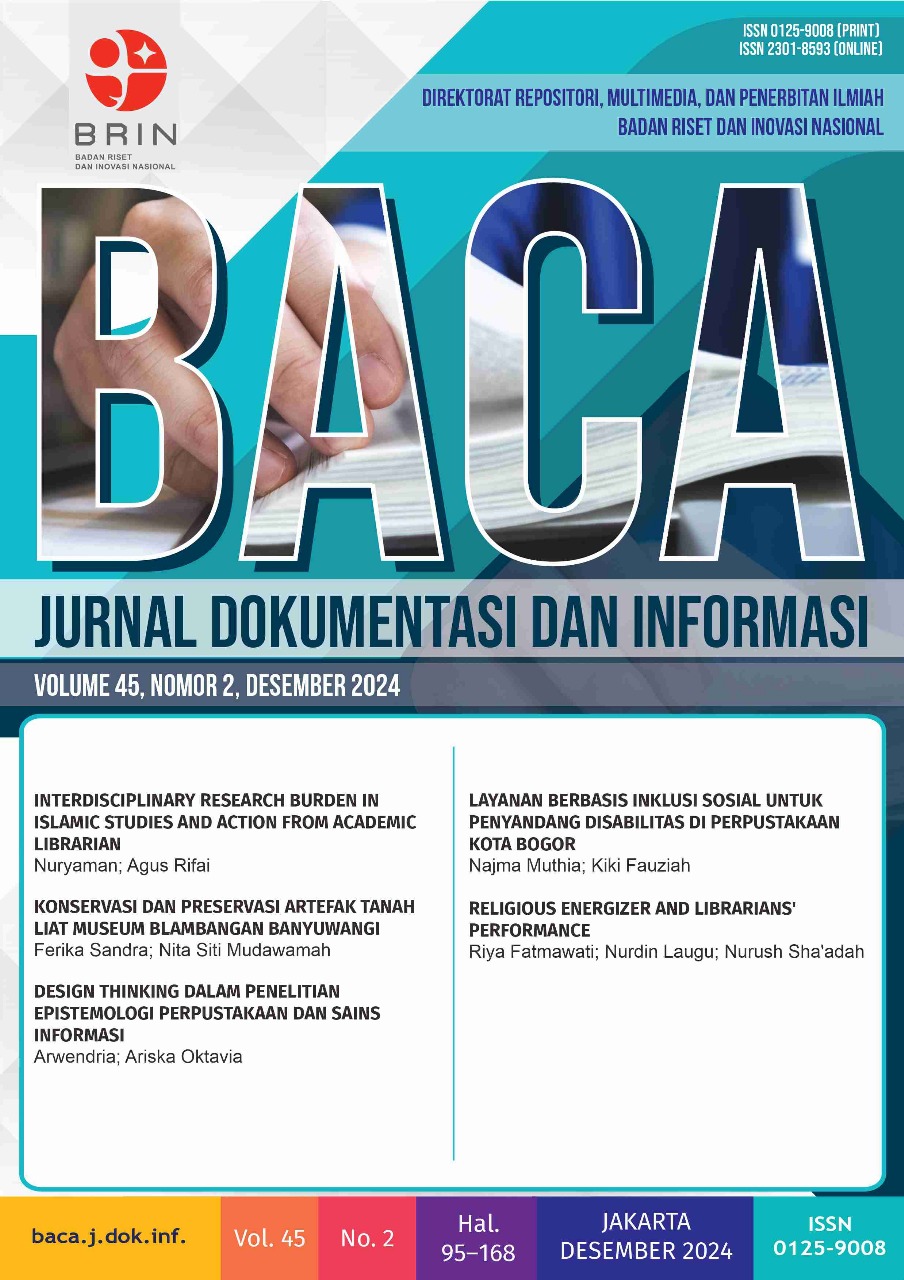Design Thinking dalam Penelitian Epistemologi Perpustakaan dan Sains Informasi
Main Article Content
Abstract
The need for a new paradigm in Library and Information Science (LIS) research is increasingly focused on the needs and experiences of library users. Traditional paradigms are considered inadequate in generating relevant and impactful knowledge for the library user community. This study discusses the application of the Design Thinking (DT) approach in the context of LIS research to improve the relevance and effectiveness of library services. DT offers an innovative approach to designing solutions that are more responsive to the challenges faced by library users. Through a systematic literature review, this study explores the various stages of the DT process, including empathy, problem definition, ideation, prototyping, and testing. The study also highlights the importance of interdisciplinary collaborative research in creating products and services that align with the needs of library users. The research method employed is a systematic literature review, which involves searching scientific databases with inclusion and exclusion criteria, evaluating the quality of selected articles, synthesizing data qualitatively, and concluding with a report following the PRISMA guidelines. The results indicate that the DT approach is effective as a user-centered research method. DT not only enhances user participation in the design process but also encourages innovation in the development of library services and LIS epistemology. The application of DT can transform the way knowledge is created in LIS by strengthening partnerships between researchers and users, making the process more responsive and relevant to the needs of library users. The conclusion of this study suggests that the application of DT can serve as a user-centered research method and reshape the approach to knowledge creation in LIS.
Downloads
Article Details

This work is licensed under a Creative Commons Attribution-ShareAlike 4.0 International License.


